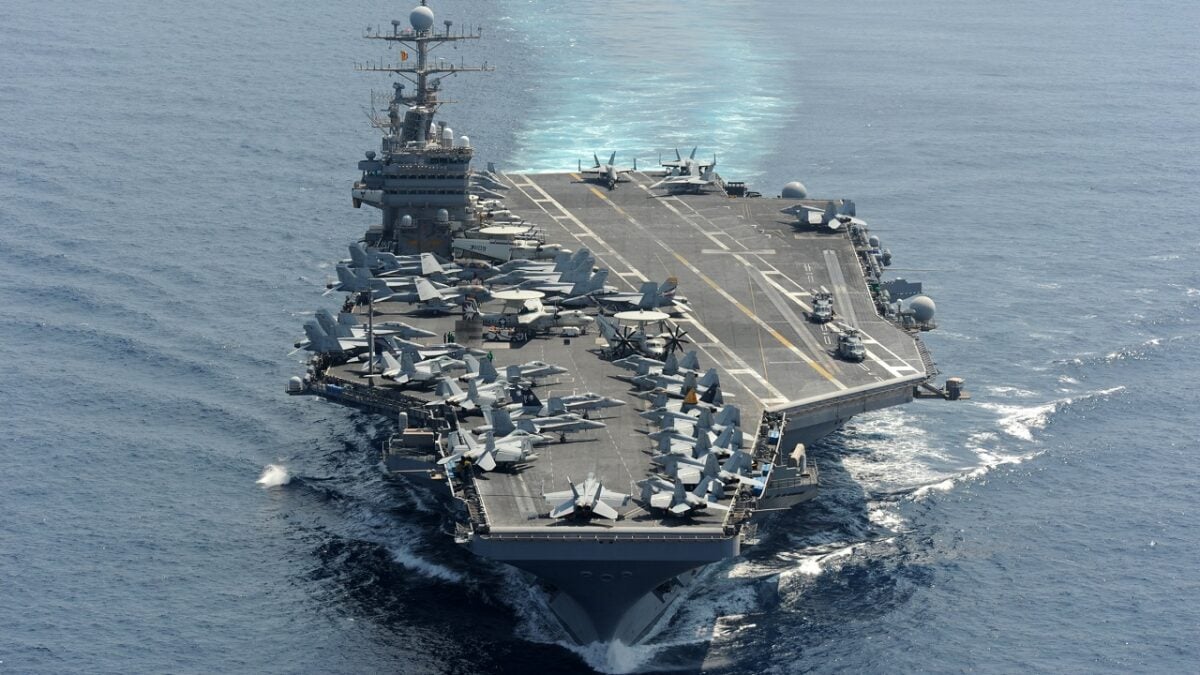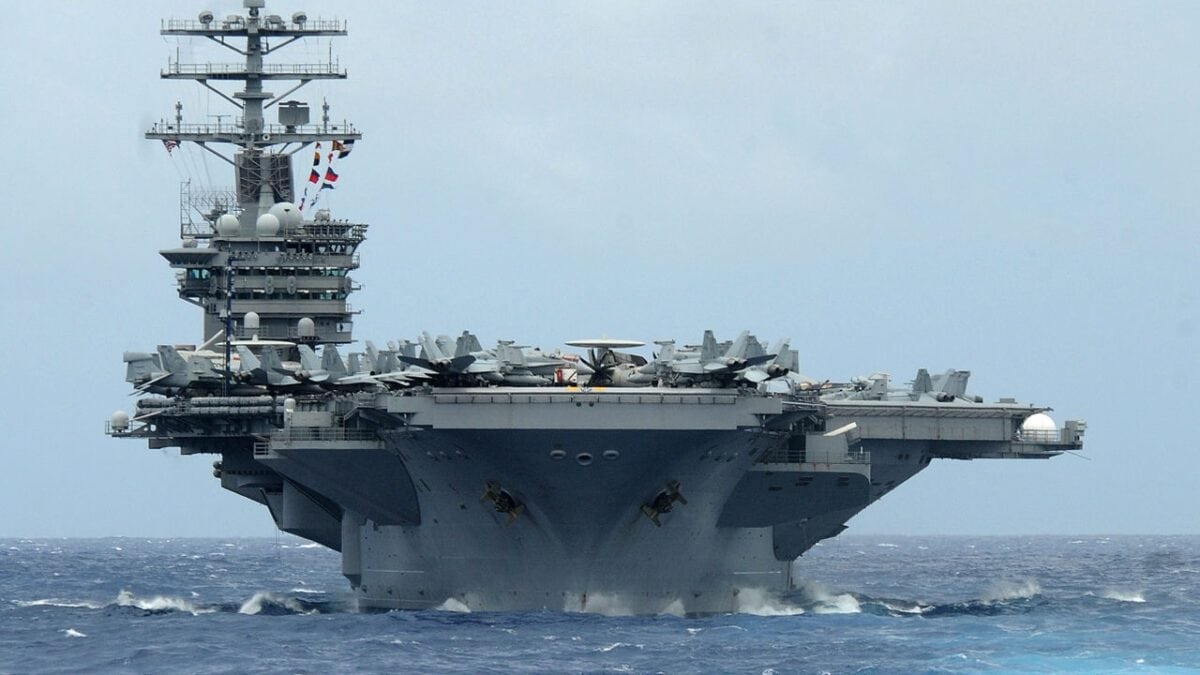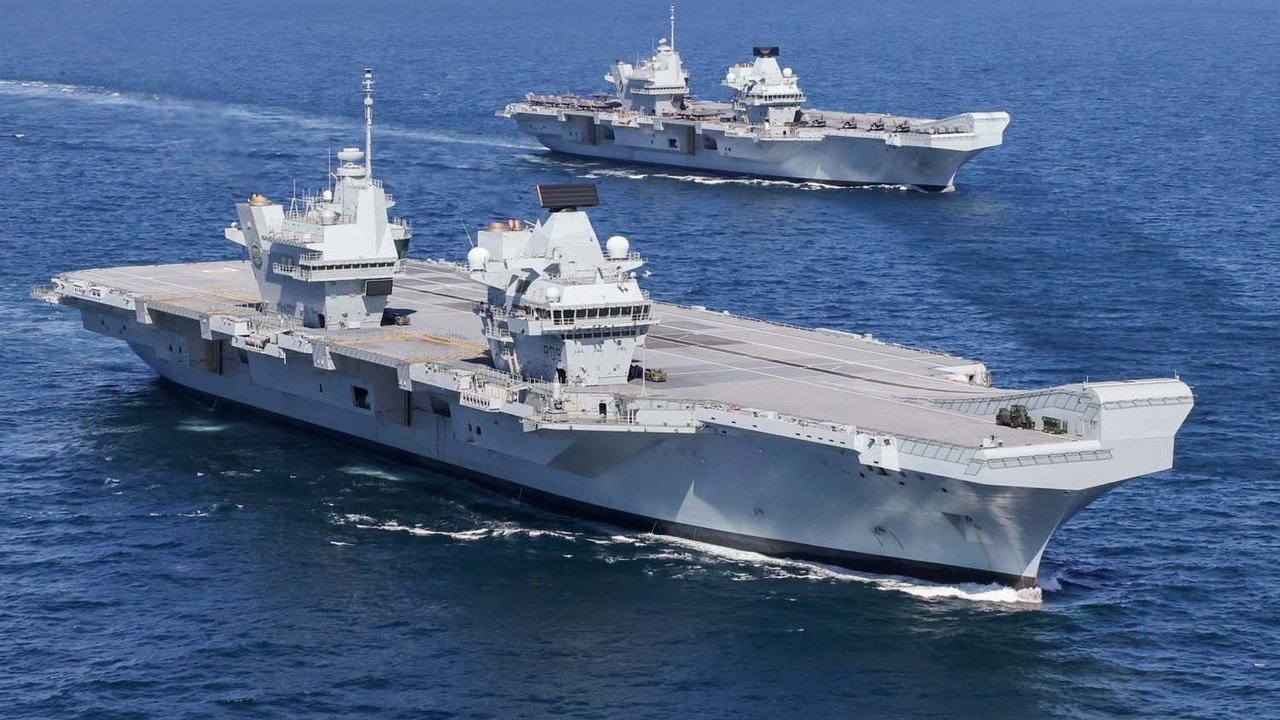NATO is worrying more and more about Russia and its actions in the Arctic. It seems now the U.S. Navy and Royal Navy are sending their aircraft carriers as a sign that they are watching Moscow’s moves in the area very closely indeed.
NATO is stepping up its activity in the Arctic, intensifying its operations in what has long been considered a region of low tension.
NATO has been present in the Arctic throughout its existence — Norway is a founding member and has the alliance’s northernmost territory in Europe — but its focus on the region has increased as Russia has expanded its already extensive Arctic military presence.
The US and British navies, two of the alliance’s most capable fleets, have underscored their renewed interest in the region by spending more time farther north — most notably with milestone deployments of their aircraft carriers.
NATO’s 2018 Trident Juncture exercise, held in and around Norway, was the alliance’s largest exercise since the Cold War. It saw a US carrier sail into the Arctic for the first time in nearly 30 years — “a watershed moment,” according to the chief of naval operations, Adm. Michael Gilday.
During that exercise, “we did our first carrier strike operations above the Arctic Circle” since the early 1990s, and since then US warships have “routinely been in the high north,” Gilday told lawmakers at a hearing in May.
Throughout the war in Ukraine, US destroyers have continued “operating with allies and partners in the high north to put pressure on Russia, to make sure that they know that we’re there with capable platforms,” Gilday added.
The British Royal Navy followed suit this spring, sending HMS Prince of Wales into the Arctic for seven weeks — the first Arctic deployment for the UK’s new Queen Elizabeth-class carriers.
The carrier participated in Cold Response 2022, another major NATO exercise in Norway, and sailed within 900 miles of the North Pole. It also visited Norway’s Jan Mayen Island, a strategically located outpost in the Norwegian Sea.
By sending the carrier that far north, the Royal Navy sought “to push the boundaries of UK carrier operations in the cold, harsh environment,” the ship’s commanding officer said.
While neither navy has sent another carrier into the Arctic, the lessons from their deployments are being put into practice as other operations in the region continue.
“Without a doubt the [US] Navy’s embrace of the Arctic has improved, largely as a result of lessons learned from Truman’s deployment,” Joshua Tallis, an expert on polar naval operations at CNA, a research organization, told Insider.

120118-N-QH883-003
INDIAN OCEAN, (Jan 18, 2012) The Nimitz-class aircraft carrier USS Abraham Lincoln (CVN 72) transits the Indian Ocean. Abraham Lincoln is in the U.S. 7th Fleet area of responsibility as part of a deployment to the western Pacific and Indian Oceans to support coalition efforts. (U.S. Navy photo by Chief Mass Communication Specialist Eric S. Powell/ Released)
Some of the changes, such as logistical improvements, may not be obvious, Tallis said, “but from my vantage point the Navy is much more aware of the opportunities and perils of Arctic operations than it was only a few years ago.”
HMS Prince of Wales returned home in mid-April. It is now sidelined with a mechanical failure, but its crew has relayed their Arctic experiences to sailors on HMS Queen Elizabeth, which is preparing to deploy for operations around northern Europe.
“The biggest challenge was actually on the flight deck with snow and ice clearance, and the guys quickly learned, ‘OK, certain things will freeze when we didn’t expect them to,'” Cmdr. Neil Twigg, head of air operations on HMS Queen Elizabeth, told Insider.
“If you were to go on the flight deck, we’ve got a load of anti-icer still up here, because we’re prepared for that,” Twigg said in an interview aboard the carrier in September, as it visited New York City to host the Atlantic Future Forum.
High latitude, rising tension
HMS Prince of Wales’ deployment reflects the British navy’s increasing investment in Arctic operations.
In 2020, the British navy “recommenced” routine operations in the Arctic, according to the UK’s updated Arctic strategy, released in March. Later that year, US and British ships led exercises in the Barents Sea, the first time either navy had done so in several decades.
The Barents is bordered by sensitive Russian military installations, and Moscow sees it as a “bastion” for the ballistic-missile submarines that make up its second-strike nuclear capability.
The new Arctic strategy promised “a periodic” Royal Navy presence in the high north, and Adm. Ben Key, first sea lord and chief of the British navy, said at the forum in September that deployments to the region “will be more frequent than we’ve done in the past.”
“We feel very keenly of our over overall obligations in the region. We have to represent that,” Key told reporters, speaking as British ships conducted another Barents Sea patrol.
At the hearing in May — shortly after US destroyers completed a monthslong “short notice” deployment to the high north — Gilday said the US Navy was “in an upward trajectory with respect to the Arctic, and I don’t think we’re going to turn back.”
NATO’s increasing focus on the Arctic comes as relations with Russia have deteriorated over the past decade.
Russia, which has the world’s longest Arctic coastline and extensive economic investments there, has refurbished and reopened Arctic bases, stationed new forces in the region, upgraded units already there, and conducted larger and more complex exercises.

PACIFIC OCEAN (July 18, 2012) The aircraft carrier USS Nimitz (CVN 68) is underway during the Great Green Fleet demonstration portion of the Rim of the Pacific (RIMPAC) 2012 exercise. Nimitz took on 200,000 gallons of biofuel in preparation for the Great Green Fleet demonstration during Rim of the Pacific (RIMPAC) 2012. Twenty-two nations, more than 40 ships and submarines, more than 200 aircraft and 25,000 personnel are participating in RIMPAC exercise from June 29 to Aug. 3, in and around the Hawaiian Islands. The world’s largest international maritime exercise, RIMPAC provides a unique training opportunity that helps participants foster and sustain the cooperative relationships that are critical to ensuring the safety of sea lanes and security on the world’s oceans. RIMPAC 2012 is the 23rd exercise in the series that began in 1971. (U.S. Navy photo by Mass Communication Specialist 2nd Class Eva-Marie Ramsaran/Released)
That activity has stoked concern among Moscow’s neighbors. Nordic countries “have been more and more nervous about Russian intentions” since it attacked Ukraine in 2014, but the renewed attack in February “broke the old normal of Arctic relations,” said David Auerswald, a professor at the US National War College.
“The Arctic, and in particular the European Arctic, is no longer characterized as an area of high north latitude, low tension,” Auerswald, an expert on Arctic security, said at an event hosted by George Mason University in October.
Russian statements reflect that tension.
Russia’s latest maritime doctrine, released in July, identified “an expansion of foreign naval presence in the Arctic, and an increase in the potential for conflict in the region” as two “main challenges and threats” to its national security. The head of Russia’s powerful Northern Fleet said in October that despite “relative stability,” the Arctic “was characterized by growing negative trends.”
Even with resources and manpower, including Arctic-based units, diverted to Ukraine, Moscow’s focus on the Arctic “stands strong,” Katarzyna Zysk, a professor at the Norwegian Institute for Defense Studies, said during an event in September.
“The Russian maritime doctrine that was updated in July moved the Arctic to the top of the list of regional priorities,” Zysk added. “We also see that Russian military activity, surprisingly given what’s happening in Ukraine, is still quite intense in the region.”
Russia is “likely to feel more threatened” as the Arctic becomes more accessible and as an expanding NATO increases operations there, Auerswald said.
NATO is unlikely to change course as it seeks to counter what it views as Russia’s destabilizing actions and to understand what it needs in order to operate in a rapidly changing region.
“I just foresee that as the nature of the oceans in the High North, and Antarctica, change as a result of the climate warming, we need to understand our obligations in the region,” Key said. “We need to be able to demonstrate a willingness to operate.”

